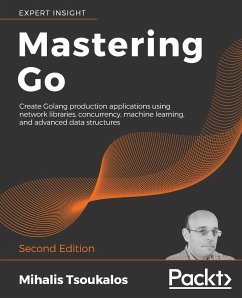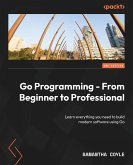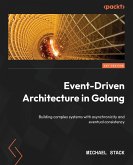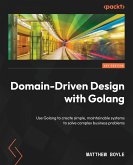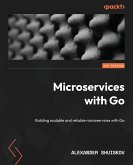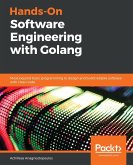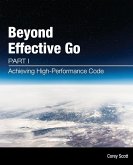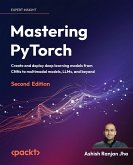Publisher's Note: This edition from 2019 is outdated and is not compatible with the latest version of Go. A new third edition, updated for 2021 and featuring the latest in Go programming, has now been published. Key Features Second edition of the bestselling guide to advanced Go programming, expanded to cover machine learning, more Go packages and a range of modern development techniques Completes the Go developer's education with real-world guides to building high-performance production systems Packed with practical examples and patterns to apply to your own development work Clearly explains Go nuances and features to remove the frustration from Go development Book Description Often referred to (incorrectly) as Golang, Go is the high-performance systems language of the future. Mastering Go, Second Edition helps you become a productive expert Go programmer, building and improving on the groundbreaking first edition. Mastering Go, Second Edition shows how to put Go to work on real production systems. For programmers who already know the Go language basics, this book provides examples, patterns, and clear explanations to help you deeply understand Go's capabilities and apply them in your programming work. The book covers the nuances of Go, with in-depth guides on types and structures, packages, concurrency, network programming, compiler design, optimization, and more. Each chapter ends with exercises and resources to fully embed your new knowledge. This second edition includes a completely new chapter on machine learning in Go, guiding you from the foundation statistics techniques through simple regression and clustering to classification, neural networks, and anomaly detection. Other chapters are expanded to cover using Go with Docker and Kubernetes, Git, WebAssembly, JSON, and more. If you take the Go programming language seriously, the second edition of this book is an essential guide on expert techniques. What you will learn Clear guidance on using Go for production systems Detailed explanations of how Go internals work, the design choices behind the language, and how to optimize your Go code A full guide to all Go data types, composite types, and data structures Master packages, reflection, and interfaces for effective Go programming Build high-performance systems networking code, including server and client-side applications Interface with other systems using WebAssembly, JSON, and gRPC Write reliable, high-performance concurrent code Build machine learning systems in Go, from simple statistical regression to complex neural networks Who this book is for: Mastering Go, Second Edition is for Go programmers who already know the language basics, and want to become expert Go practitioners.
Hinweis: Dieser Artikel kann nur an eine deutsche Lieferadresse ausgeliefert werden.
Hinweis: Dieser Artikel kann nur an eine deutsche Lieferadresse ausgeliefert werden.

